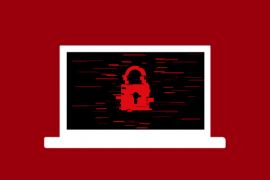Software's Stealth War on Hardware
Views, News & more

With all the hype surrounding the Internet of Things and Big Data, a much bigger IT trend is being overlooked: Software's war on hardware.
Many functions that were once performed by expensive proprietary hardware are now being performed by proprietary software that's bundled with such hardware. As software patents expire, open-source software running on commodity hardware is increasingly able to replicate these functions.
This is transforming IT - cutting costs, speeding up provisioning, and forcing proprietary vendors to up their game considerably.
Here are just a few areas where software is eating away at the demand for hardware.
Server Virtualisation — Sweating the Existing Hardware
Server virtualisation software, such as VMware vSphere, Microsoft Hyper-V and XenServer, is enabling IT managers to maintain the logical separation between different applications and server environments, while consolidating the work onto fewer physical servers. IT Manager can spin up new virtual machines on their existing hardware, without having to buy anything other than the occasional software licence.
Cloud PBXs – Eliminating the Need for SMEs to Buy Own Hardware PBXs
The brains of your business phone system is a private branch exchange (PBX). Traditionally, companies would buy a hardware PBX for each of their offices. But this is changing. Multi-tenanted software PBXs run on virtual machines in the Cloud are grabbing market share from on-site hardware PBXs — with 2 million UK business phone lines now powered by Cloud PBXs.
Hardware PBXs — Under Threat from Asterisk
Even when the PBX stays on-site, proprietary hardware is losing out. Some firms are replacing their proprietary PBX with open-source Asterisk running on top of commodity server hardware.
Network Function Virtualisation — Chipping Away at the Need for Appliances
Routers, switches, firewalls and load balancers — traditionally, these have been pieces of propretiary hardware. But increasingly, they are being delivered as virtual appliances – as software running on top of virtual machines run on generic servers running OpenStack. No proprietary hardware required.
Public Cloud with APIs — Fewer Servers, Fewer SANs
Much of the computing that was traditionally done in office server rooms is migrating to higher density Cloud-based multi-tenanted platforms, improving efficiency and cutting down the amount of hardware required to cope with growing loads.
Microsoft and Google are members of the Open Compute Project that's investigating ways to improve data centre efficiency, while lowering costs. That will eventually feed through to the Microsoft Azure and Google Cloud platforms.
Just as Dell managed to apply 'lean' principles to become so efficient that it could sell at prices lower than the costs of its smaller rivals, major Cloud service providers are seeking to become so efficient that in-house hosting of servers becomes the expensive option.
SaaS — Eating Away at the Need for On-Site Servers
Software-as-a-Service is chipping away at the demand for hardware, by moving server applications off inefficient on-site servers to centralised highly efficient multi-tenanted platforms optimised for a specific application.
Storage Virtualisation — Perhaps You Don't Need that Expensive Proprietary SAN After All?
There will always be a role for high-performance ultra-reliable storage area networks (SANs). But that role is getting smaller, as ever more software is being released that allows commodity servers with directly attached storage to be turned into low-cost mediocre-performance virtual SANs. They're not as good, but for many companies, they're good enough.
Security Applications — Who Says You Need a Hardware Appliance?
Increasingly, VPNs and web filtering aren't being delivered by hardware appliances, but by software running on commodity hardware. That commodity hardware is only going to get cheaper, making this approach ever more attractive.
Don't Cry for the Hardware Manufacturers
Demand for storage keeps increasing. Demand for servers keeps increasing. So, don't feel sorry for the hardware manufacturers. They're losing out on potential growth, not revenue.
Many IT hardware manufacturers are not really manufacturers in the traditional sense. They design hardware, but often they don't manufacture it themselves. Most of what they sell is really the work of their software developers, support teams, technical trainers, sales teams and marketers.
If software destroys demand for their proprietary hardware, there will still be demand for many of the other aspects of their offering.
What Are the Implications For You?
Software's war on hardware is good news for your business.
Your organisation's IT budget is likely to stretch further. Your IT systems will become more scalable. You'll be able to afford a more technically sophisticated setup.
The cost savings may make it possible for you to offload much of the systems maintenance work to external suppliers, such as public cloud providers, private cloud providers, SaaS providers, and Cloud PBX providers.
So when it comes to software's war on hardware, you'll be the victor. Proprietary hardware manufacturer's loss is your gain.
Get in touch
020 7847 4510
We may process your personal information in order to send you information you request, measure and improve our marketing campaigns, and further our legitimate interests. For further details, see our privacy policy.
Contact us
-
- Head Office:
- hSo, 50 Leman Street, London, E1 8HQ
- Switchboard:
- 020 7847 4500
- Support (24x7):
- 0333 200 3337
- support@hso.co.uk
- Marketing & Sales:
- 020 7847 4510
- info@hso.co.uk

















